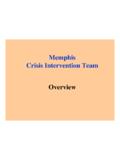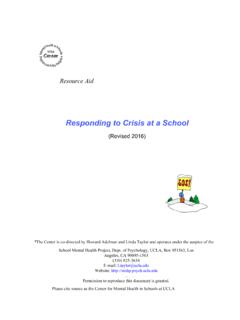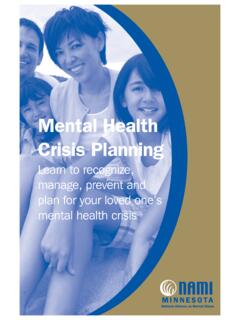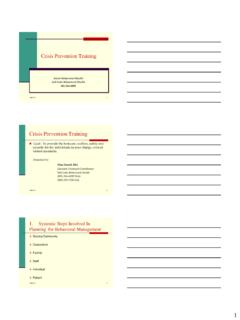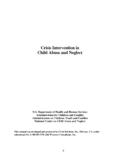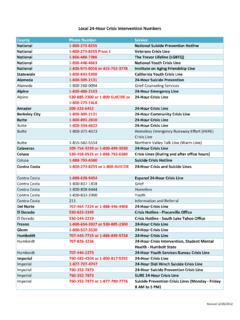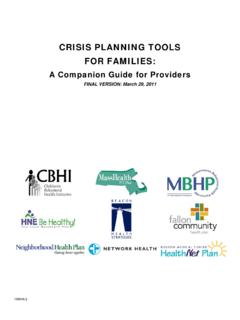Transcription of Joint Commission Standards on Restraint and Seclusion ...
1 2009 CPI (reprinted 2010). All rights 12/10 Joint Commission Standards on Restraint and Seclusion /Nonviolent crisis Intervention Training Program10850 W. Park Place, Suite 600 Milwaukee, WI 53224 TTY (Deaf, hard of hearing, or speech 2009 CPI (reprinted 2010).2 Joint Commission Standards on Restraint and Seclusion /Nonviolent crisis Intervention Training ProgramAlignmentJoint Commission StandardJoint Commission Element of PerformanceHow CPI Works With the Element of PerformanceStandard : The [organization] uses Restraint or Seclusion only when it can be clinically justified or when warranted by patient behavior that threatens the physical safety of the patient, staff, or The hospital uses Restraint or Seclusion only to protect the immediate physical safety of the patient, staff, or The hospital does not use Restraint or Seclusion as a means of coercion, discipline, convenience, or staff The hospital uses Restraint or Seclusion only when less restrictive interventions are The hospital uses the least restrictive form of Restraint or Seclusion that protects the physical safety of the patient, staff, or The hospital discontinues Restraint or Seclusion at the earliest possible time.)
2 Regardless of the scheduled expiration of the recommends that physical intervention be used only as a last resort when a patient has become a danger to self or others, and that the least restrictive intervention be used at all possible does not recommend or endorse time limits on physical interventions . Instead, CPI advises that staff continually assess for signs that the patient is no longer dangerous to self or others and discontinue the physical intervention as soon as : The [organization] uses Restraint or Seclusion The hospital implements Restraint or Seclusion using safe techniques identified by the hospital s policies and procedures in accordance with law and The use of Restraint and Seclusion is in accordance with a written modification to the patient s plan of Nonviolent Physical crisis InterventionSM techniques are designed for safety and allow a Therapeutic Rapport to be re-established with the individual who has lost control.
3 Key elements of Nonviolent Physical crisis InterventionSM responses include: No element of pain is involved. The intent is to calm the individual. The individual is not restrained on the floor, reducing risks of Restraint -related positional asphyxia and other injuries. Team interventions are used when necessary. Used only as a last resort when someone presents a danger. Use to protect not to teaches that inherent in any form of physical intervention is some level of risk of physical or emotional harm. When staff are aware of the possible risks associated with Restraint , CPI believes they are more likely to more strenuously seek intervention strategies that avoid using also recommends that Certified Instructors incorporate into training population-specific examples.
4 In this way, staff are educated regarding the care plan(s) of those in care. Further, CPI suggests that an organization evaluate each individual patient for any medical or psychological conditions that may contraindicate the use of Restraint . If possible, CPI recommends that this information be included directly in an individual s care plan to ensure the best possible care for that person. 2009 CPI (reprinted 2010).3 Joint Commission StandardJoint Commission Element of PerformanceHow CPI Works With the Element of PerformanceStandard : The [organization] initiates Restraint or Seclusion based on an individual A physician or other authorized licensed independent practitioner primarily responsible for the patient s ongoing care orders the use of Restraint or Seclusion in accordance with hospital policy and law and The hospital does not use standing orders or PRN (also known as as needed )
5 Orders for Restraint or The attending physician is consulted as soon as possible, in accordance with hospital policy, if he or she did not order the Restraint or Unless state law is more restrictive, orders for the use of Restraint or Seclusion used for the management of violent or self-destructive behavior that jeopardizes the immediate physical safety of the patient, staff, or others may be renewed within the following limits: 4 hours for adults 18 years of age or older 2 hours for children and adolescents 9 to 17 years of age 1 hour for children under 9 years of age Orders may be renewed according to the time limits for a maximum of 24 consecutive Unless state law is more restrictive, every 24 hours, a physician or other authorized licensed independent practitioner primarily responsible for the patient s ongoing care sees and evaluates the patient before writing a new order for Restraint or Seclusion used for the management of violent or self-destructive behavior that jeopardizes the immediate physical safety of the patient, staff.
6 Or others in accordance with hospital policy and law and Orders for Restraint used to protect the physical safety of the nonviolent or non self-destructive patient are renewed in accordance with hospital interventions are designed to protect the Care, Welfare, Safety, and SecuritySM of the service users and providers. CPI strongly suggests that organizations review information regarding any pertinent local, state, or federal policy. With that in mind, CPI will always suggest that staff consult and work with a patient s direct care provider to ensure that all interventions used are medically does not advocate use of timed physical interventions , but rather continual assessment for opportunities to discontinue a physical intervention or at the very least an opportunity to utilize a less restrictive : The [organization] monitors patients who are restrained or Physicians or other licensed independent practitioners or staff who have been trained in accordance with 42 CFR (f) monitor the condition of patients in Restraint or Seclusion .
7 (See also , EP 3.)The Nonviolent crisis Intervention training program teaches participants to monitor the physical and psychological needs of the person being restrained. CPI recommends that an additional staff member who is trained in proper Restraint use but not directly involved in the Restraint continuously monitor the person s physical and psychological status, including but not limited to vital signs, circulation, and comfort. 2009 CPI (reprinted 2010).4 Joint Commission StandardJoint Commission Element of PerformanceHow CPI Works With the Element of PerformanceStandard : The [organization] has written policies and procedures that guide the use of Restraint or The hospital s policies and procedures regarding Restraint or Seclusion include the following.
8 Physician and other authorized licensed independent practitioner training requirements Staff training requirements The determination of who has authority to order Restraint and Seclusion The determination of who has authority to discontinue the use of Restraint or Seclusion The determination of who can initiate the use of Restraint or Seclusion The circumstances under which Restraint or Seclusion is discontinued The requirement that Restraint or Seclusion is discontinued as soon as is safely possible A definition of Restraint in accordance with 42 CFR (e)(1)(i)(A C) A definition of Seclusion in accordance with 42 CFR (e)(1)(ii) A definition or description of what constitutes the use of medications as a Restraint in accordance with 42 CFR (e)(1)(i)(B) A determination of who can assess and monitor patients in Restraint or Seclusion Time frames for assessing and monitoring patients in Restraint or seclusion2.
9 Physicians and other licensed independent practitioners authorized to order Restraint or Seclusion (through hospital policy in accordance with law and regulation) have a working knowledge of the hospital policy regarding the use of Restraint and Nonviolent crisis Intervention training program is built upon the information taught in the CPI crisis Development ModelSM. This model establishes a framework for assessing crisis situations and it is discussed here when staff shall utilize physical intervention(s). CPI supports that only trained staff members be allowed to intervene in a crisis , specifically when an intervention has moved to a physical level. Further, CPI strongly suggests that an organization have written policies and procedures regarding who has authority to physically intervene, how that decision is made, and when the physical intervention will be discontinued, as well as which techniques staff are authorized to recommends that an organization review its policies on a regular and ongoing basis to ensure that policies are in accordance with not only best practice Standards and guidelines but also legislative regulations.
10 CPI also recommends that its Certified Instructors incorporate this information directly within their training of the Nonviolent crisis Intervention program so as to keep all staff informed of these rules/regulations. 2009 CPI (reprinted 2010).5 Joint Commission StandardJoint Commission Element of PerformanceHow CPI Works With the Element of PerformanceStandard : The [organization] evaluates and reevaluates the patient who is restrained or A physician or other licensed independent practitioner responsible for the care of the patient evaluates the patient in-person within one hour of the initiation of Restraint or Seclusion used for the management of violent or self-destructive behavior that jeopardizes the physical safety of the patient, staff, or others.










